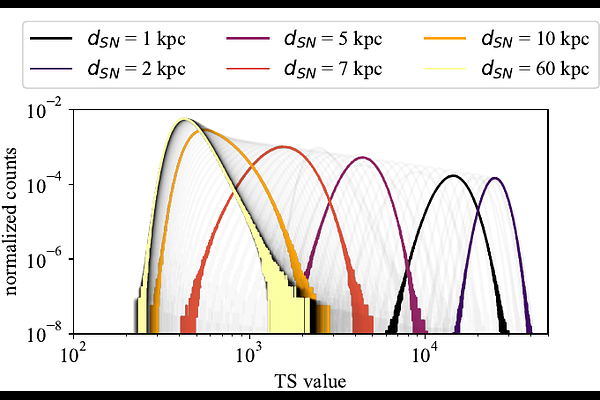Prospects for detecting generic fast-time features in the neutrino lightcurve of nearby supernovae in neutrino telescopes

Prospects for detecting generic fast-time features in the neutrino lightcurve of nearby supernovae in neutrino telescopes
Jakob Beise, Segev BenZvi, Spencer Griswold, Nora Valtonen-Mattila, Erin O'Sullivan
AbstractNeutrino emission offers a direct probe into the hydrodynamics and energy transport processes within a supernova. Fast-time variations in the neutrino luminosity and mean energy can provide insights into phenomena like turbulence, convection, and shock revival. In this paper, we explore the detection capabilities of large-volume neutrino telescopes such as the IceCube Neutrino Observatory and the planned IceCube-Gen2 detector in identifying generic fast-time features in the neutrino light curve. We also investigate the potential enhancement in detection sensitivity using wavelength shifters, which can improve light collection efficiency. By employing a Short-Time Fourier Transform analysis, we quantify the excess power in the frequency spectrum arising from fast-time modulations and compute the detection horizon for a range of generic models. We find that with IceCube we can already see the strongest modulation models (>50% amplitude) for progenitors located anywhere in the Milky Way. Sensitivity to weaker modulations (>20% amplitude) is possible in future detectors like IceCube-Gen2, in particular with the use of wavelength shifters. For all detector configurations, the frequency and central time of the fast-time feature at the 5$\sigma$ detection horizon can be measured with a resolution of 7.0 Hz and 17 ms respectively.